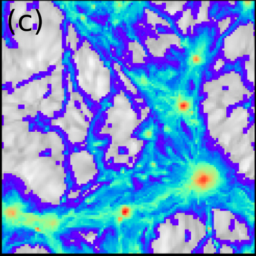Linking radio observations to magnetic field topology in the cosmic web
Serena Banfi (Unibo)
Tuesday 11/05/2021 @ 14:00, Sala IV piano Battiferro
Structure formation shocks are believed to be the largest accelerators of cosmic rays in the Universe. In the work I am presenting, we performed simulations of the large-scale structure with a magnetohydrodynamical grid code in order to study the the dependence of shock obliquity on different realistic scenarios of cosmic magnetism. We found that shock obliquities are more often perpendicular than what would be expected from a random three-dimensional distribution of vectors, and that this effect is particularly prominent in the proximity of filaments, due to the action of local shear motions. By coupling these results to what emerged from particle-in-cell simulations, we estimated the flux of cosmic rays in galaxy clusters and concluded that the amount of energy converted into energetic ions may be smaller than expected, due to the limited amount of parallel shocks: this conclusion can in principle explain why no trace of hadronic gamma-ray emission, which would be expected to be associated to cosmic-ray ions, has been detected by Fermi-LAT. Starting from this initial macroscopic, large-scale analysis, we also addressed the study of the role of plasma magnetic properties with a microscopic approach by means of particle-in-cell simulations. This new generation of simulations is key to allow the correct interpretation of future radio surveys: in particular, the coupling of the detection of synchrotron radiation and the measure of Faraday rotation is potentially able to provide insights about obscure details of plasma processes in the cosmic web, given the right predictions are made based on simulations that are able to probe spatial scales over several orders of magnitude.

